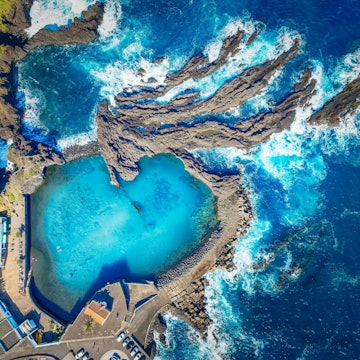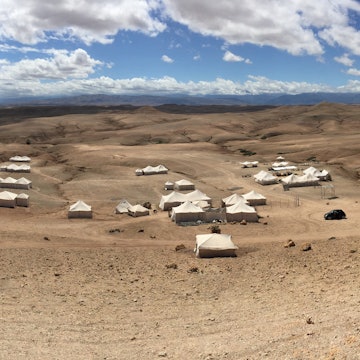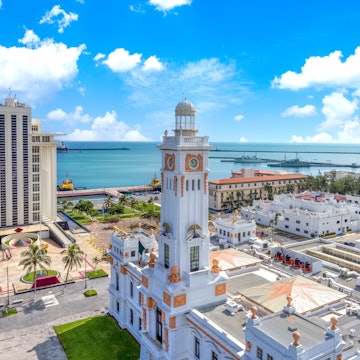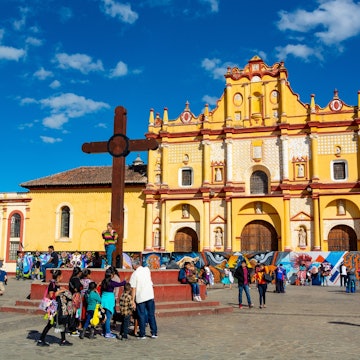

São Tomé and Príncipe is one of the continent’s most special secrets. Mong Ya Dido/Shutterstock
Off Africa’s west coast, the archipelagic nation of São Tomé and Príncipe is one of the continent’s most special secrets.
Made up of two main islands, São Tomé and Príncipe offers the best of tropical paradise: long and deserted beaches fringed with palms and a plethora of activities to help you access all this beauty.
But there’s something more here – in a word, harmony. On these islands, nature holds sway and the people move in respectful tandem with the natural world; those who make the long trip here will find superb landscapes and a tourism industry in sync with the surroundings.
Expect quiet pleasures, like lingering over a banquet of moqueca de peixe (fish stew) and gloriously named blá-bla (smoked fish) while gazing out over the Atlantic. Hike through a forest, find a beach and enjoy being the only one there.
Interest piqued? Read on to learn more before your first visit to São Tomé and Príncipe.
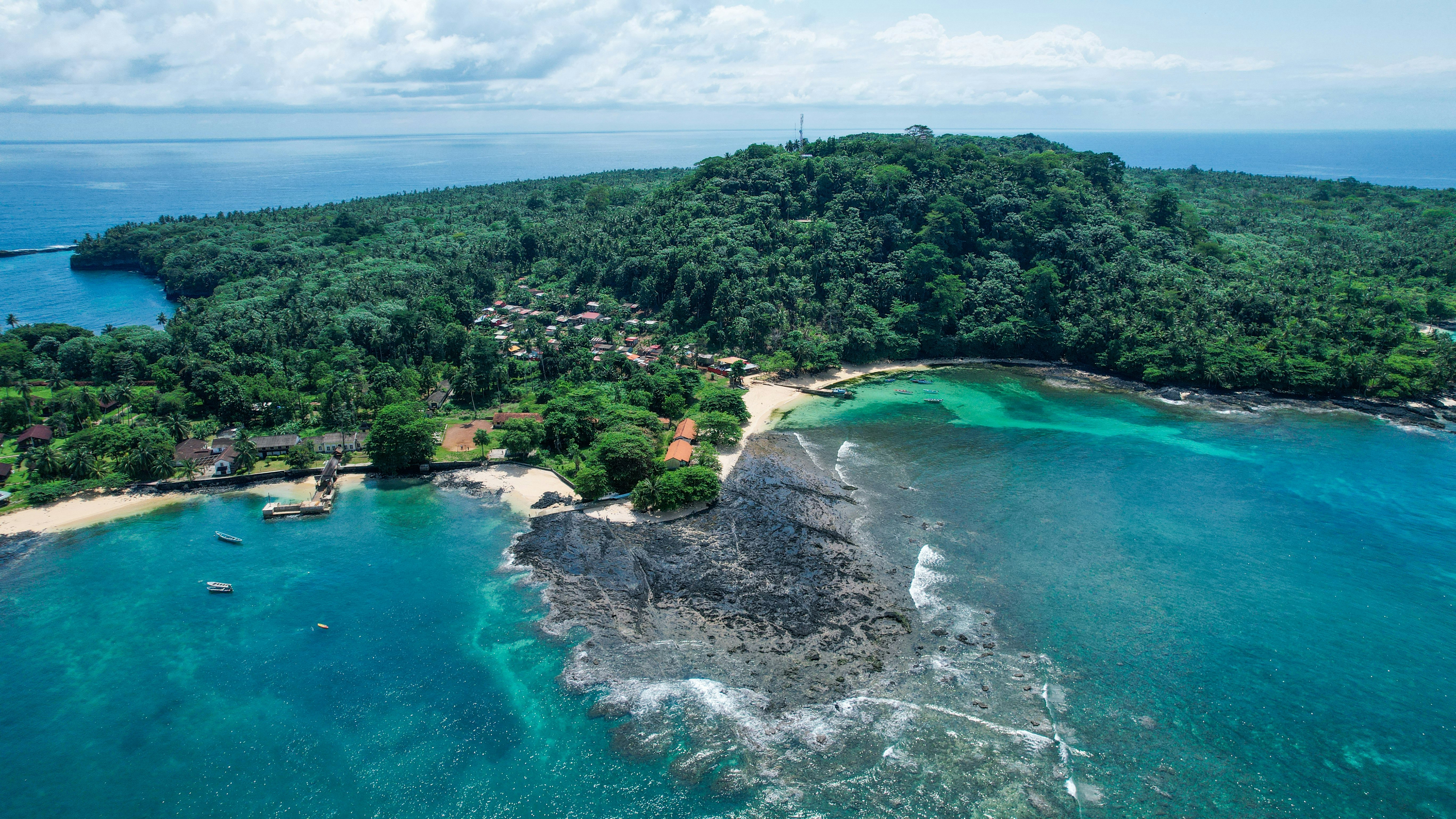
When should I go to São Tomé and Príncipe?
The busiest time to visit – a relative term, given those wonderfully low arrival numbers – is between June through August. These are the driest months, and they coincide with European summer holidays, drawing visitors from Portugal (from which São Tomé and Príncipe gained independence in 1975) in particular. To avoid even the hint of a crowd, come in June, before Europeans set off on summer vacations but when the weather is already lovely. Note that while deep-blue skies are the norm in summer, since this is the tropics it can (and often does) rain at any time.
There are two shoulder seasons in this part of the world. The first, from March to May, begins with the last rains of the wet season in March and April; May can be magnificent or torrential, depending on the year. The same applies from September to November. September is usually lovely, though rising humidity can be an uncomfortable sign of things to come. By October, everything is steamy; November usually brings the first rains. In these shoulder months, the rain is rarely constant, arriving instead in the form of apocalyptic afternoon storms that disappear almost as soon as they arrive.
December to February is the rainy season. It can be busier than usual at this moment due to Christmas–New Year holidays in Europe, though with near-constant rain, we wouldn’t recommend this season as the best time of year to visit.
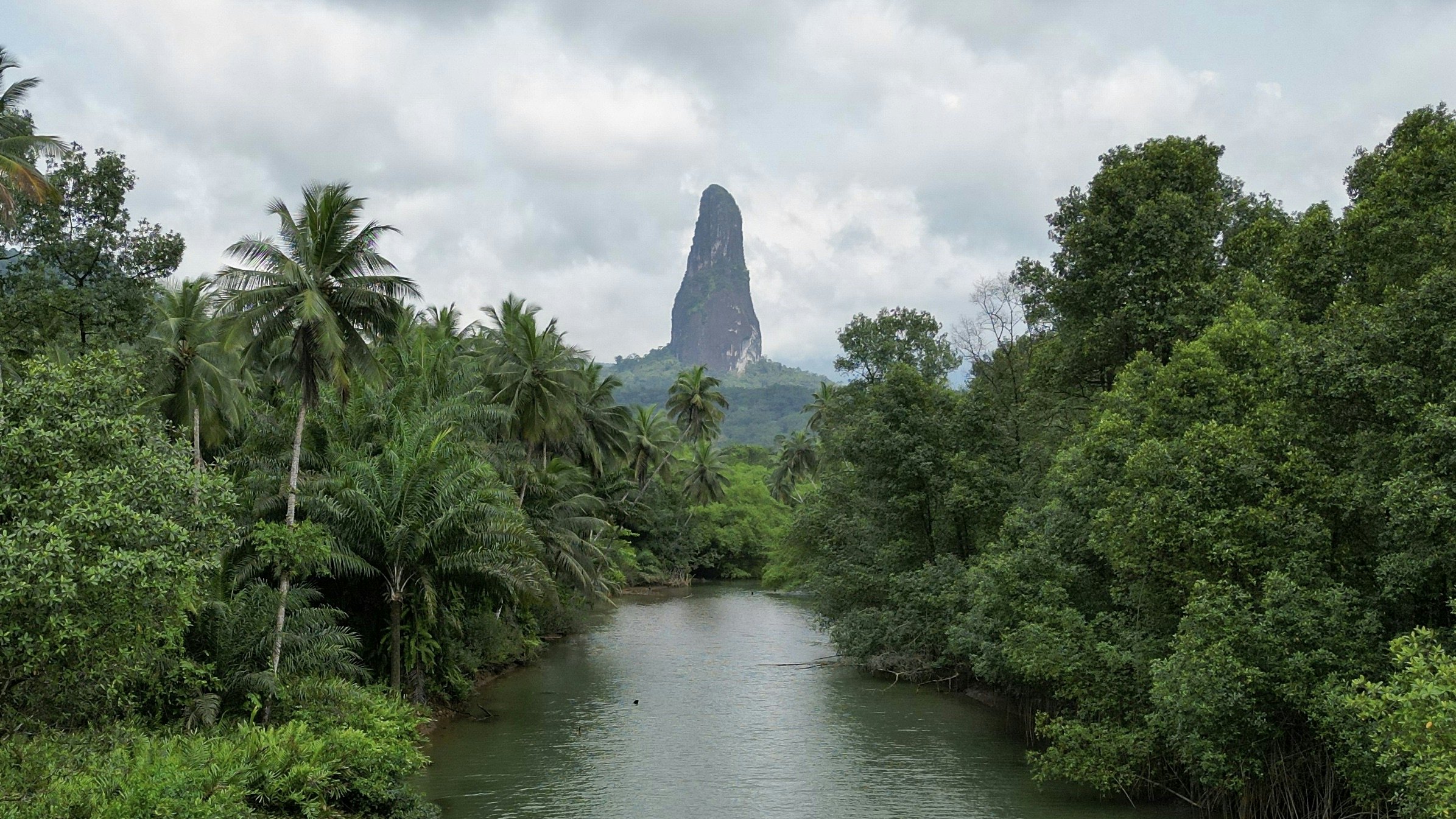
How much time should I spend in São Tomé and Príncipe?
It’s feasible to see most of what this compact country has to offer in 10 days. Yet two weeks would be ideal for truly taking it all in, for São Tomé and Príncipe deserves to be savored, rather than just “seen” and “done.” (What’s more, budgeting an extra day or two for rain disruptions is never a bad idea.) So in addition to the must-do list of attractions, any trip here is enhanced by slowing down and embracing the languid pace of life. Moments such as these are ones you won’t forget – or regret.
Is it easy to get in and around São Tomé and Príncipe?
Yes – but some aspects of a visit here require careful advance planning. Unlike many African countries, São Tomé and Príncipe makes it easy when it comes to visas. Citizens of the US, Canada, UK and most European countries don’t need a visa for a visit of fewer than 15 days; travelers with most other nationalities (or those with the nationalities above staying more than 15 days) can apply for an e-visa.
Flights to São Tomé and Príncipe are few: if you don’t fly directly from Lisbon, you should count on connecting in Libreville, Gabon or Luanda, Angola – with all airfares quite high. Once you arrive, however, flights open up the country. Boats between the two main islands can be overcrowded, slow and even dangerous – so book ahead to catch one of the regular flights between Príncipe and São Tomé on STP Airways.
Unless you’re on a tour with all travel arrangements taken care of, it makes sense to rent a car on each island you visit. As international car rental companies don’t operate here, you should expect to do this through your hotel, with any car also coming with a local driver/guide. If you want to plan on driving yourself, you’ll need an International Driving Permit (unless your license was issued in Portugal).
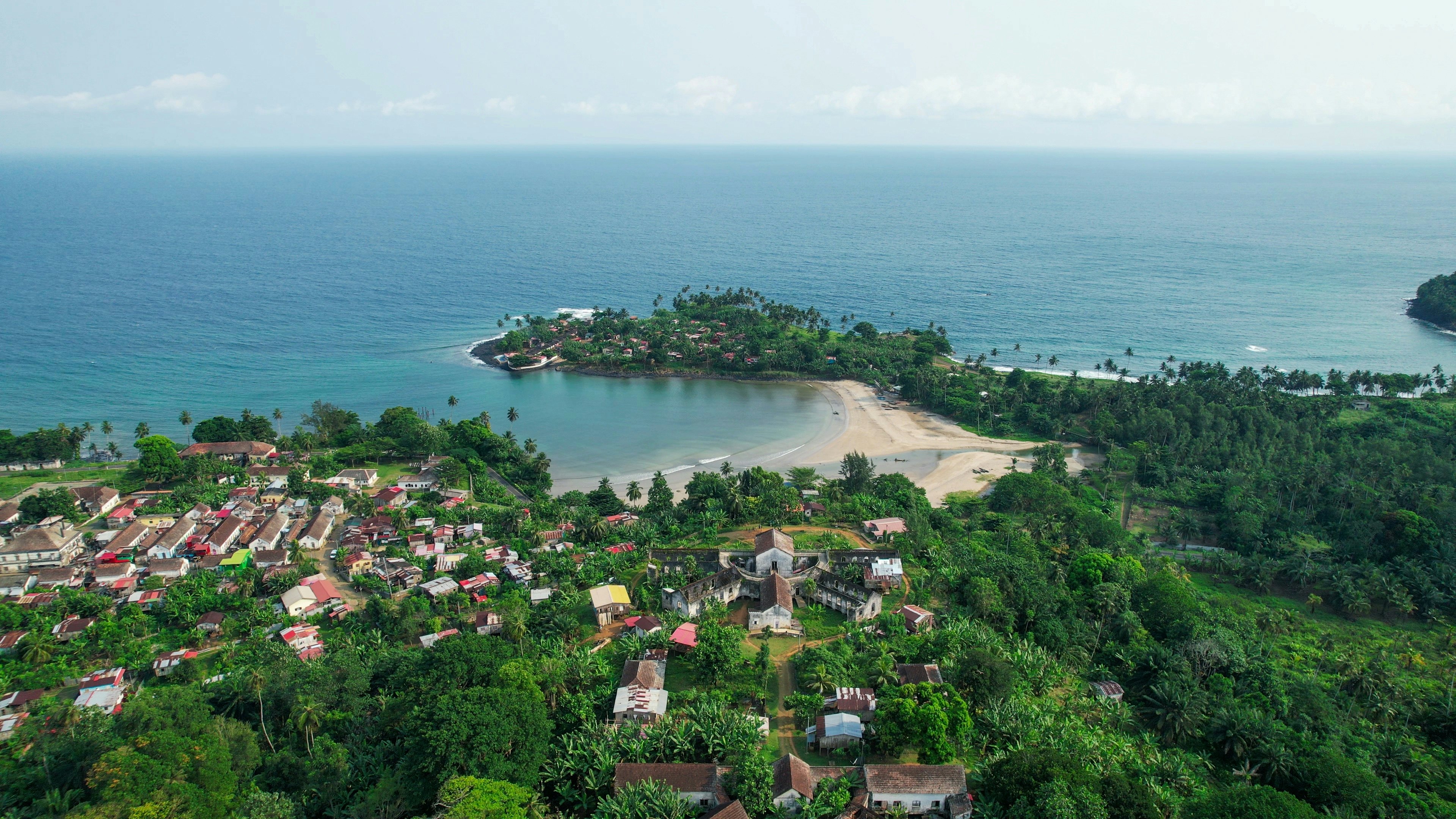
Top things to do in São Tomé and Príncipe
Forests carpet the country and beaches encircle São Tomé and Príncipe. Which is why eating fabulous seafood, hiking through forests to pristine beaches and climbing to volcanic summits are some of the most popular things to do here.
Savor the seafood of northern São Tomé
You’ll eat well wherever you go in São Tomé and Príncipe – freshly frilled fish from a roadside stall makes for a guaranteed good meal. Yet to really elevate things, head for São Tomé’s northern coast, where two spots – the Mucumbli ecolodge and Celvas restaurant in Guadeloupe – do remarkable things with all manner of local seafood, including white grouper, amberjack, swordfish, spider crab and octopus. The smell of the sea air, the profusion of tropical vegetation and the combination of local ingredients with Portuguese flavors (the feijoada à moda da terra, a bean stew, is a rare land-based preparation) mean you’ll find yourself looking for reasons to be in the area whenever lunch or dinner draws near. To fill the time in between, you could always spend the afternoon swimming in the bath-warm waters of nearby Praia dos Tamarindos.
Be awed by nature in southern São Tomé
Things start to get wonderfully weird as you head south on the main island of São Tomé. At a point around 51km south of the capital, Cão Grande thrusts up above the forest, a 663m-high finger of rock that appears to have been generated by CGI. Of volcanic origin, this petrified tower of magma is from a long-disappeared volcano. Protrusions like these are found across the south: hike through the forest from the tiny hamlet of Santa Josefina and you’ll pass Cão Pequeno (271m). For a really great day, continue along Rio do Portinho to the blissfully isolated Praia de Santo António Mussacamú, a tiny cove beach accessible only by hiking trail or boat.
Lie out alone on Príncipe’s glorious beaches
Many agree that São Tomé lies truly apart from the hustle and bustle of the rest of the world. And then they arrive in Príncipe. The second-largest of the country’s islands yet with fewer than 10,000 residents, Príncipe is swathed in forest, rich in biodiversity and lined with empty beaches. And these beaches are some of the world’s best. Your first view of Praia Banana, for example, will be from the cliff-top lookout at Roça Belo Monte in the island’s north. Elemental colors – deep forest greens, golden-white sands, profound Atlantic blues – dominate. Continuing south along the coast, Praia Macaco and Praia Boi, each accessible only along its own winding forest path, are just as pretty. Pick the right day to visit and you may be the only ones there.
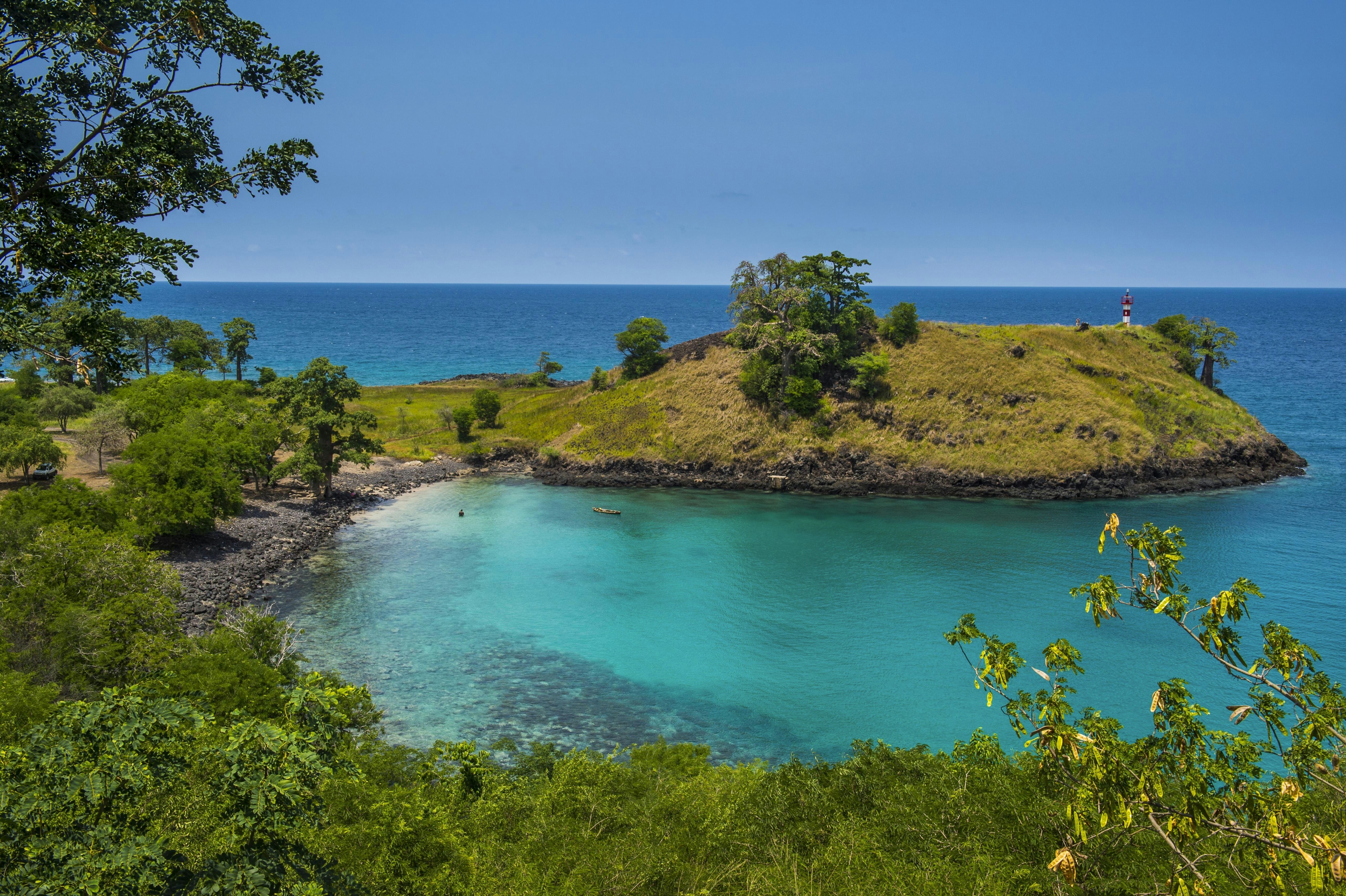
My favorite thing to do in São Tomé and Príncipe
I have seen no body of water in Africa more beautiful than the Baía das Agulhas (Bay of Spires) in Princípe. Looking like a drowned city of skyscrapers cast into stone, the bay is a stunner, with granite towers (called the Father, the Son and the Grandson, and Table Mountain) soaring over the ocean. The only reason this extraordinary place is not packed with people is that very few knows it exists. Which, of course, is fine by the rest of us.
There are many ways to experience Baía das Agulhas. You can arrange a scenic (and pricey) helicopter flight through the Bom Bom Resort, for example. Or go on a 3-hour boat trip looking for whales (which pass through from July to September). Or strap on a mask and go snorkeling; if you’re in the water from October to December and have some luck, you might swim with sea turtles. Having made it this far, I always try to do them all.
How much money do I need for São Tomé and Príncipe?
São Tomé and Príncipe is not a cheap destination – though it’s far more reasonable than other African island idylls like Mauritius or Seychelles; for a top-notch hotel, think €300 a night rather than €3000. On a tight budget, you might be able to get by on €100 per person per day – or even a little less. At the upper end of the price range, expect to spend at least €200 per day, although you could spend three times that.
Hotel room: €40–350 per day
Car/4WD rental: €40–100 per day
Street food (riz sauce, or rice with sauce): €2–5
Deluxe three-course dinner for two: €100
Pint of beer at the bar: €3
Is São Tomé and Príncipe safe?
Yes – in fact, São Tomé and Príncipe might just be the safest country in Central Africa, with crime of any kind extremely rare. Still, remember that some late-model smartphones may be worth the equivalent of a local’s annual salary, so be discreet with your belongings. Be especially careful on beaches (leave any valuables in your hotel’s safe), particularly near Morro Peixe, north of São Tomé city.
Bring euros with you
The local currency is the dobra, which you’ll mostly use for smaller, more-local transactions – at a market or casual restaurant, for instance. Everywhere else, it’s increasingly the norm to pay in euros, so make sure you bring plenty, including in a range of different denominations, as US dollars are becoming far less popular (and less changeable) than they used to be.
São Tomé and Príncipe is almost entirely a cash economy, with credit cards accepted only at the most luxurious hotels, restaurants and travel agencies.
Learn some Portuguese
It’s a good idea to brush up on your Portuguese before visiting São Tomé and Príncipe: nearly 99% of the population speaks the language, compared to just 5% who speak English. While that ratio is higher in larger hotels and restaurants that cater to tourists, it’s not by much. Nearly one-third of people here speak Forro, a kind of Portuguese Creole.








